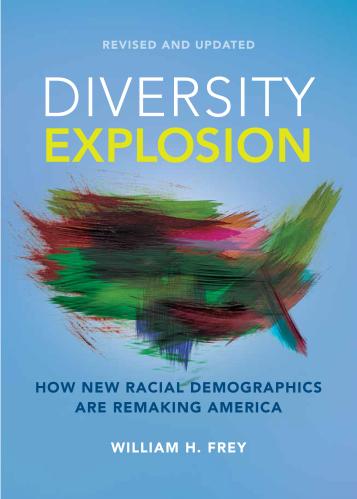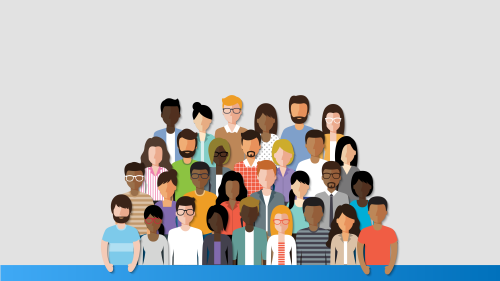A close examination of detailed age data released by the Census Bureau last month reveals a startling fact: More than half of the nation’s total population are now members of the millennial generation or younger. The data shows that the combined millennial, Gen Z, and younger generations numbered 166 million as of July 2019, or 50.7% of the nation’s population—larger than 162 million Americans associated with the combined Gen X, baby boomer, and older cohorts.


To many Americans—especially baby boomers themselves—this news may come as a shock. For them, the term “millennial” has been associated with a youthful, often negative, vibe in terms of habits, ideology, and politics. Now, the oldest millennial is 39, and with their numbers exceeding those of baby boomers, the millennial generation is poised to take over influential roles in business and government.
But the current political environment suggests this takeover could be contentious. Millennials and their juniors (Gen Z and younger) are more racially diverse than those that preceded them, with nearly half identifying as a racial or ethnic minority. Social, economic, and political fissures between millennials and older, whiter generations are well known; there is no question that in his screeds against illegal immigrants, voter fraud, political correctness, and the like, President Trump has preyed on the fears of older whites about the nation’s changing racial demography—a strategy he continues to follow.

The current demographic shift, however, may work against that strategy—not only because of the changing numbers, but also due to a new coalescence around recent events that could increase these younger generations’ political clout. There is no doubt that the COVID-19 pandemic will most negatively impact the economic prospects of younger generations, who are bearing the brunt of outsized job losses, evictions, and—among Gen Z—disruptions in education. For older millennials, this is the second stage of a double economic whammy, as many of them never fully recovered from the 2007 to 2009 Great Recession. As millennials and younger generations find themselves at the center of the pandemic’s economic storm, they are poised to fight for a bigger say in how the nation recovers.
The second reason for greater coalescence among these generations comes from their increased awareness and activism against systemic racism, stemming from the murder of George Floyd in May. Even in the face of a dangerous pandemic, this brutal event prompted millions of young people from all racial groups to protest against not just the racist aspects of the criminal justice system, but the many dimensions of structural racism that have kept Black Americans from achieving the education, jobs, housing, and wealth that whites have long enjoyed. The fact that nearly two-fifths of millennials and Gen Z are Black and brown makes these issues deeply personal for them. The broad coalition of all races—including whites—in this movement suggests a joining of disparate interests toward making fundamental changes in racial justice.
Surveys undertaken even before these recent developments show that millennials and Gen Z differ from older generations on issues such as immigration reform, criminal justice, environmental protection, the role of government, and the importance of diversity. It is likely that the pandemic and recent activism will further galvanize this generation to promote an array of progressive causes.
President Trump’s recent messaging—attacking protests with “law and order” rants about crime, retweeting a video promoting white power, and celebrating Confederate monuments—is clearly intended to solidify support from his base to counter the movement now underway.
In light of this, the question remains: Can the new activism among millennials and Gen Z translate into the political support necessary to elect progressive and Democratic candidates in November? These two generations now comprise a greater share of the eligible voting population (37%) than has ever been the case. It’s about the same share of eligible voters as baby boomers and their elders—generations that voted for Trump in 2016 and for Republican candidates against President Obama.


Bear in mind that younger voters tend to have lower turnout rates than older voters. In 2016, just 51% of eligible voters under age 40 turned out, compared with 70% of those over age 55. But given the strong Democratic support shown in previous presidential elections among Black voters and, to a lesser extent, Latino or Hispanic and Asian American voters, the new energy of this racially diverse generation could propel greater turnout and advance their clout. Moreover, this time, nonwhites comprise over half of millennial and Gen Z voters in nine states, including the swing states of Arizona and Florida as well as potential swing states of Georgia and Texas.
This trend may find some headwinds due to the fact that increasing numbers of all residents (including whites without a college degree) disapprove of Trump’s handling of the pandemic, while a majority of all whites have shown support for the Black Lives Matter movement.
If the nation’s most racially diverse generations—which now comprise more than half of the population—can spearhead a movement that engages their older peers and parents, it would send a strong signal that the country is changing in important ways. Projections show that by 2030, millennials and their juniors will make up more than half not just the population, but of all eligible voters. With America’s youth already leading the charge against systemic racism and economic injustice, we can hope that it won’t take another decade before vital change comes to the nation.
Watch the July 23, 2020 event featuring William Frey’s research, A nation at a demographic crossroad: Rising diversity, youthful activism, and the 2020 election.






Commentary
Now, more than half of Americans are millennials or younger
Will their size and activism impact the 2020 election?
July 30, 2020